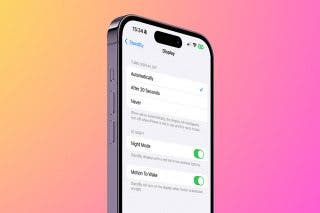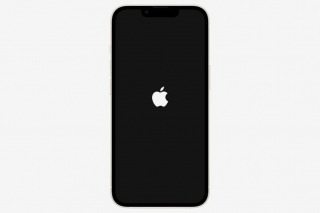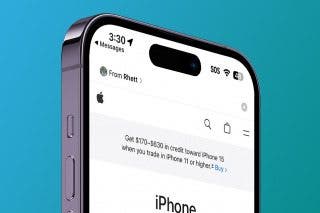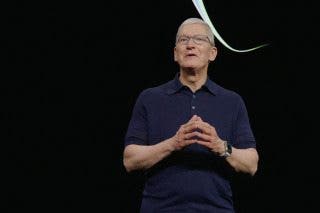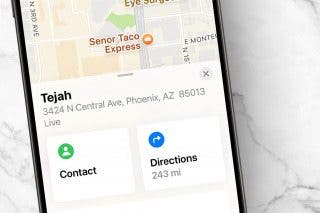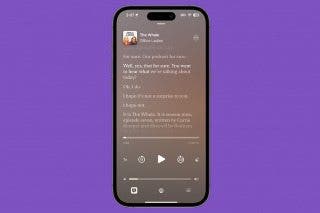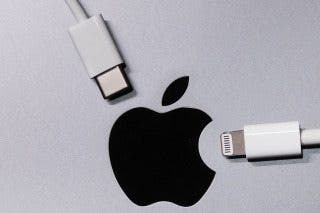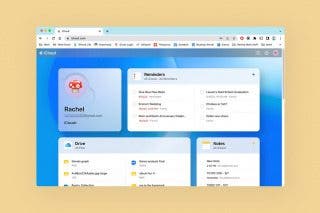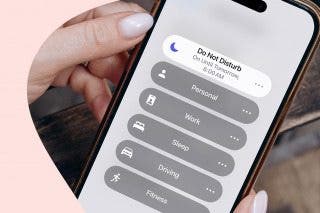The Best Apps for Reading, Podcast Listening & Cleaning


In the 108th episode of the iPhone Life Insider Podcast, tune in as the team shares their favorite apps for reading, listening to podcasts, and getting on a good cleaning routine at home. Stick around for an exclusive Insider discussion of how to manage your app subscriptions on the iPhone.
Click here to listen and subscribe. If you like what you hear, be sure to leave a review. And remember to tune in every other week to hear our editors share with you the latest Apple news, best apps, iPhone tricks, and coolest accessories.
This episode was brought to you by JAMF. You’re probably spending too much time or money configuring and maintaining your company’s devices. Trade in the hassle and get Jamf Now, a cloud-based mobile device management system that allows you to configure settings, add email accounts, download apps, and set up security measures for all of the devices in the company.
Special Discount for Podcast Listeners!
Want more iOS how-to content that's designed to make your life easier and more productive? Visit iPhoneLife.com/PodcastDiscount and get $5 off our premium subscription to iPhone Life Insider.
Question of the week:
What do you think of book-summarizing apps like Blinkist? Would you pay $15/month for one? Let us know why or why not by emailing your answers to podcasts@iphonelife.com to let us know.
Articles referred to in this episode:
- How to Create A Reminder on Your iPhone or iPad
- iPhone X, XS, XS Max & XR: How to Use an iPhone with No Home Button
Apps & gear referred to in this episode:
- Blinkist ($19.99/month)
- Tody ($6.99)
- Overcast (free)
- Jabra Move Wireless Headphones Style Edition (Starting at $99.99)
Useful links:
- Join the iPhone Life Facebook Group
- Insider walk-through: get a sneak peek of members-only benefits
- Get the Insider discount for Podcast Listeners
- Sign up for the free Tip of the Day Newsletter
- Email the Podcast
- Subscribe to iPhone Life magazine
Transcript of Episode 108
Donna Cleveland: Hi and welcome to episode 108 of the iPhone Life podcast. I'm Donna Cleveland, Editor in Chief at iPhone Life.
David Averbach: I'm David Averbach, CEO and Publisher at iPhone Life.
Sarah Kingsbury: And I'm Sara Kingsbury, Senior Web Editor at iPhone Life.
Donna Cleveland: Each episode we bring to you the best apps, top tips, and great gear in the iOS world. This episode we have a sponsor for you that David is going to share.
David Averbach: So, today I'm going to tell you guys about Jamf. Jamf is a software that allows you to manage your iPhones for enterprise use. And basically what that means is if you're a company that's giving your employees iPhones, there's a lot of logistical stuff that you need to manage and Jamf makes that really easy for you. So, to set up the phones, to install the proper security settings, and if you have custom apps for your employees, all of those types of things Jamf makes really easy.
David Averbach: They have a free trial. So, make sure you check them out at jamf.com.
Donna Cleveland: Awesome. And I also want to do a quick plug for our Daily Tips Newsletter. If you haven't signed up already, go to iphonelife.com/dailytips and we'll send you a tip that'll teach you something cool you can do with your device in less than a minute a day. So, it's a really useful way if you want to improve the way you're using your iPhone, iPad, Apple Watch, any of the devices you have, with a really low time commitment, then this is the newsletter for you. So, iphonelife.com/dailytips.
Donna Cleveland: We also want to share with you our favorite tip of this past week. It's a really simple one, but I know a lot of my friends at least are not making use of the Reminders app. So, I chose this one just for any of you who might be in the same camp, 'cause Reminders have changed my life. And it's just how to create reminder on your iPhone or iPad.
Donna Cleveland: So, there are a couple different ways to do this, but if you don't regularly use the Reminders app, you find the icon on your home screen. It's white and it has a few lines on it and a little dot says Reminders underneath it. Tap it and from there you'll have a list ... I think if it's the first time you've used it, you'll have a default list there. But you can create different lists and then within that you can create reminders.
Donna Cleveland: So, for instance, I'll have a list for work and a list for home. So, if I have anything home-related like buy paper towels or something, I'll go into my home list, tap ... you can just tap anywhere in the list and it'll bring up a new reminder there and you just type in "buy paper towels". And this is the crucial part is you want to set either a location or a time-based reminder, otherwise it's just going to be hanging out in this app and you're probably never going to go in to look at it. If you set a time that you want to be reminded or a location where you want to be reminded then, it will pop up on your screen. I usually do time-based instead of location-based, so I know that this evening I want to go get paper towels after work so I'll set it for five p.m. and then as I'm leaving work, I'll have a reminder pop up on my screen, 'cause at least for me, I'm pretty forgetful.
Donna Cleveland: The Reminders app I think is super useful. And that's a simple way. You can also use CRE, which I also use all the time.
David Averbach: Uh-huh. (affirmative).
Sarah Kingsbury: Yeah.
Donna Cleveland: But, yeah.
Sarah Kingsbury: That's how I use the Reminders app. I actually, I do have some scheduled reminders, but I use it for my shopping list. And so, I will just be doing something in the kitchen, I'll realize I'm running low on something and I'll just call out to Siri, you know, add this to my shopping list.
Donna Cleveland: That's so nice.
David Averbach: Yeah.
Sarah Kingsbury: Then when I get to the store, I just open and it's all there.
David Averbach: Well, and then another thing you can do that I really like is you can have shared lists.
Sarah Kingsbury: Right.
David Averbach: So, my partner and I have a shopping list. So, whenever like if I'm cooking and I see we've run out of olive oil, I'll just add it to the list, then whoever goes shopping can see it right away and it's a nice way to do that kind of joint list for things like that.
Sarah Kingsbury: Right and if you have family sharing set up, then you have it automatically creates a shared reminders list for your family, which my mom doesn't realize, so I get a lot of her reminders on that list. But if you do realize and you use it properly, it can be really handy.
Donna Cleveland: That's funny.
David Averbach: Yeah. Also, I mean, this is a really obvious one, but reoccurring reminders can be really nice to use too. I just set one up to remind me to take out the trash on Thursdays.
Donna Cleveland: Yes.
David Averbach: And I kept forgetting and now I don't forget. So, thank you Reminders.
Sarah Kingsbury: Yeah. And you can use Siri for that too. You can just say remind me every week to do this thing at such and such a time even and it will take care of all of that for you.
Donna Cleveland: So, that is out tip for this episode.
Donna Cleveland: I just want to take a minute to tell you about our premium subscription, iPhone Life Insider. So, we're an independent publishing company. A lot of people think we might be associated with Apple in some way, but we're not. And we love offering free services like our Daily Tips Newsletter, but really how we support ourselves is our iPhone Life Insider Program and so, signing up is not only great for us, but also for you, 'cause we have features that will teach you to really get the most out of your device.
Donna Cleveland: I know a lot of people are somewhat functional with their iPhones, but there's so much these devices can do that people don't know how to take advantage of. So, we make it really easy for you to learn in a really painless, effortless way. So, we have video guides that will teach you how to set up your new iPhone. All the basics of how to use your device. We also have more advanced guides. We teach you all the new features when new version of iOS come out. So, when iOS13 comes out later this year, if you're an Insider, you'll be the first to learn how to use that. We have an Ask an Editor feature. So, that means you can write in any specific tech problem you're having. If you get stuck, which all of us do sometimes, we'll help you find a solution so that you are not stuck anymore.
Donna Cleveland: You also get a digital subscription to iPhone Life magazine. We've been around for ten years now, so you get our full archive from the past ten years as well as all the new issues. And you get video versions of our Daily Tips. So, those are just short one minute videos every day that will teach you how to use your iPhone and iPad better.
Donna Cleveland: Lastly, we now have a premium version of this podcast. So, you get exclusive content. You can listen to that on your iPhone thorough the podcast's app or on our Insider site. So, there's a lot to gain by becoming an Insider. If you go to iphonelife.com/insider. We actually have a special discount.
David Averbach: Yeah.
Donna Cleveland: If you go to iphonelife.com/podcastdiscount, you can get five dollars off your annual subscription to iPhone Life Insider. So, thank you for being podcast listeners. If you want to support us, go to iphonelife.com/podcastdiscount.
Donna Cleveland: All right. That is all. Now that I've told you about our Insider program, next Sarah's going to take the stage and tell us how she helps one of our premium iPhone Life Insider subscribers solve a problem they're having.
Sarah Kingsbury: So, this was a small problem, but it's one of those little annoyances that are just kind of like make using your iPhone just not as fun and also when you fix it, it's just triumphant. So, this Insider wrote, "I just traded my iPhone 7+ for an iPhone 10R and one question I have is about the battery display. On my old iPhone, you could see the percentage of battery that was available on the home screen. Did Apple remove that capability? I like being able to quickly look at my phone and see the percentage of battery time left."
Sarah Kingsbury: So, it's still available, but Apple hid it.
David Averbach: Yeah.
Sarah Kingsbury: On all the phones that don't have home buttons, there's that notch, and so there's not as much room, but fortunately it's pretty easy to see it. You just ... you go to the top right corner where you would go say to open the control center, but instead of swiping all the way down, you just put your thumb there and just move it down just a little bit and all of the things that used to be on the top of your screen will show up including the battery percentage, you have that enabled in settings.
Sarah Kingsbury: So, that is the answer.
Donna Cleveland: 36% for me right now.
Sarah Kingsbury: And I also shared with this user, we have a guide to using iPhones, the iPhones that don't have home buttons, because a lot of different things have changed and we've heard a lot from readers who've gotten the new phones. You know, like, why can't I do this? Where did this go? So, this article helps find all of those things. So, I will share it in the show notes for this episode at iphonelife.com/podcasts.
Donna Cleveland: Awesome. Next up we want to get into our apps and gear of the week. So, do you guys have any apps and gear you'd like to share? I'm just pulling mine up.
Sarah Kingsbury: I have both.
David Averbach: I have one.
Donna Cleveland: Go for it.
David Averbach: Go ahead, Sarah.
Sarah Kingsbury: Well, the app I've been using, which I put down as free, but it's not. I think it costs about three dollars. I'll put the correct price in the show notes on iphonelife.com/podcast. And I don't know how it's pronounced, 'cause it's like a combination of today and to-do. So, is it todo? Tode? I don't know.
Donna Cleveland: Tode?
Sarah Kingsbury: But it's really useful. It's basically an app that helps you stay on top of cleaning your house, which I don't know about you guys, but I don't like doing that and when I have to spend hours cleaning my house, I try to find other things to do instead.
Donna Cleveland: Yeah.
Sarah Kingsbury: So, with this app it lets you choose the things by area of your house, like bedrooms, kitchen, bathrooms, what you want to clean and how frequently and then it just reminds you.
Donna Cleveland: Nice.
Sarah Kingsbury: So, I've got it set up so I spend like 20 minutes a day cleaning one part of my house. So, my house is always clean, which is an amazing thing, 'cause I have dogs and my whole life is coated with dog hair usually.
Donna Cleveland: Yeah. Me too.
Sarah Kingsbury: And I don't feel like that sort of dread of the weekend's coming now I have to spend my life cleaning my house, you know, so it's clean for the week ahead. So, I really like that. It's been going really well for me and I recommend it.
Donna Cleveland: Cool. So, it has a section of the app ... you can use it I assume for other kinds of reminders or is it tailored for housecleaning?
Sarah Kingsbury: It's tailored for housecleaning.
David Averbach: Oh, wow.
Donna Cleveland: That's cool.
Sarah Kingsbury: They actually have sort of a sister app. I think it's called Condo, which is for other kinds of things like that, like there's a section for your career and your family and for your friends. So, if you have kind of trouble keeping in touch with friends regularly, who you no longer like live close or see each other regularly, like that's a way to, you know, keep in touch with them regularly, get those reminders. And you know, remember to take your care in for maintenance, those sorts of things. So, they have that app as well, which I have downloaded, but I haven't started using it.
Donna Cleveland: Cool. I think I'm going to try it. Tootie, Toady, whatever.
Sarah Kingsbury: Yes, app developers when you're naming your app, make it easy to pronounce.
Donna Cleveland: Yeah, I think that's good advice. You said you have some gear too?
Sarah Kingsbury: I do. Let me just -
Donna Cleveland: Reveal.
Sarah Kingsbury: So, if you're watching the podcast, I've got the box and the actual headphones. These are over ear headphones from Jabra. They're the Jabra move style edition. They're actually surprisingly comfortable for over head earphones. A lot of people don't like them because sometimes it kind of presses on your ears, but I find them really comfortable. As with all of Jabra's products, I find the sound quality good. Battery life is excellent. But what I really like about these headphones is that, you know, how headphones they have like, if you tap three times, this will happen and if you move your finger this way, that will happen.
David Averbach: It's so hard to figure out.
Sarah Kingsbury: It's so hard to figure out. This is so simple and easy to do. Like, the volume buttons are ... it's so easy to tell what you're pressing.
Donna Cleveland: Yeah.
Sarah Kingsbury: Which is not always the case, right? And there's no weird buttons to press. There's a little switch between Bluetooth and the battery and things like that. So, I've never used headphones whose buttons were so easy to use and that is my favorite thing about them and why I am recommending them. And they start at 100 dollars, which often headphones that have good sound are more expensive. Oh, and now this is -
Donna Cleveland: Now, they're talking to you.
Sarah Kingsbury: Yeah. Now, it's connected. But now I can- Okay. Thank you for giving me that advice.
Sarah Kingsbury: I accidentally turned on the Bluetooth connection thing. So, that's why I'm recommending them 'cause they're so easy to use and they're not super expensive. They are not noise cancellation headphones, but you know, you'd pay a lot more for that.
Donna Cleveland: One thing I noticed too, I've used these before and they're also really comfortable -
Sarah Kingsbury: Yeah.
Donna Cleveland: - like you said. But also, one thing you do have to be careful about is if you don't turn them off, the battery will just drain.
Sarah Kingsbury: That is true.
Donna Cleveland: [crosstalk 00:13:24] auto turn off.
Sarah Kingsbury: That is an ongoing complaint I have about all Jabra headphones.
David Averbach: Yes, thank you.
Sarah Kingsbury: So, for instance, I know David also has these ... I have Jabra's ... they're like wireless sports ear buds. And you put them in the case and then they don't connect, disconnect necessarily from your headphones.
David Averbach: Yeah.
Sarah Kingsbury: I mean, from your phone. So, what happens is if you're listening to music then on your speaker, sometimes it will hijack that and your speaker will cut in and out, 'cause there's like this Bluetooth battle going on. And also then you'll go to use your headphones and they will be drained.
David Averbach: Yeah, it drives me crazy.
Sarah Kingsbury: Right.
David Averbach: It drives me crazy.
Sarah Kingsbury: But it's pretty easy to turn these off. So, you gotta remember.
David Averbach: I will say, 'cause I also have used those and I think I even featured them in a Buyer's Guide at one point.
Donna Cleveland: Yeah, I think you did.
David Averbach: They're a very nice combination of sound quality and affordability.
Donna Cleveland: Yeah.
David Averbach: That's a hard thing to find. Quality sound at 100 dollar price point. It's either gonna be your only pair of wireless headphones ... noise cancellation's really nice, so I think ... I always like to recommend people invest in a pair of headphones that's wireless that you can use noise cancellation on. But those are really nice if you're looking for an affordable pair of headphones that have good quality.
Sarah Kingsbury: Right.
David Averbach: And they are comfortable and lightweight.
Sarah Kingsbury: Yeah.
David Averbach: I've even used them at the gym, which I don't really do with other wireless full-on headphones.
Donna Cleveland: Yeah, I've worn these on jogs before. You know?
Sarah Kingsbury: And actually, you know, noise cancellation is great, but it's not something you should go cheap on. You know?
David Averbach: Yeah.
Sarah Kingsbury: There was a pair of headphones I was thinking about featuring that were like budget noise cancellation and first of all the noise cancellation didn't work. Second of all the battery life was terrible. And now they don't work at all. So, I decided not to feature them.
David Averbach: Good call.
Sarah Kingsbury: But yeah, so go with quality first and then add on features as you can afford them.
David Averbach: Yeah. Absolutely. Okay. Do you want to go next or do you want me to?
Donna Cleveland: Sure. I'll go.
David Averbach: Okay.
Donna Cleveland: So, I have an app I wanted to tell you guys about this week. And it's called Blinkist. It's an app that will summarize books for you in 15 minutes. So, it's similar to like a Cliff Notes type concept. And I recently ... I have a stack of like five books that I've read the first chapter of and then struggling to get through. And so, I was listening to a different podcast and they had Blinkist as a sponsor. So, I decided to check them out. I have not decided whether I want to continue. They have a week long free trial, but after that it is 15 bucks a month, which is like not nothing.
David Averbach: Yeah.
Donna Cleveland: But it was really nice. Like, I listened to one of their 15 minute summaries of a book that I wanted to read and I thought that like it was really easy to follow. They broke down the book into sections and covered them in like little two minute segments. And so it felt a lot like listening to a podcast in certain ways, but it was summarizing a book I wanted to read. So, I think that that's a really nice service for people who like Audible, that sort of thing, but they're wanting to get all the information faster.
Donna Cleveland: I'm curious. I wanted to ask you guys if this is something you would want. If you would pay 15 dollars a month for or if that just seems like too much.
Sarah Kingsbury: I don't know. I mean, I definitely you know, my to-be-read pile seems to get out of control and I'm never going to stop buying more books than I can read. But what concerns me is when other people summarize the contents of a book. You know, maybe they write an article about it, and then I go and read it, I often find myself disagreeing with them about what are the sort of important highlights and you know, things like that. So, I don't know, 'cause I haven't listened to this, but I don't know how easy it is to ... like, because part of the experience of reading is interpreting the book for yourself -
David Averbach: Uh-huh. (affirmative).
Donna Cleveland: Yes.
Sarah Kingsbury: - through your own sort of personal lens. And I don't know if there's any subconscious like lens that they're filtering the book through when they're summarizing it. So, I can't speak to that, but it was a concern of mine.
Donna Cleveland: I think I had that thought where I was like there's no way that you're getting the same experience of actually reading the book or listening to it on Audible or something, because yeah, there's not the voice of the author. Like, it's not going to be as enjoyable either, but I think it's better than nothing if there's an area that you want to know more about and you just don't feel like you have the time to fully invest.
David Averbach: Yeah, and honestly I've heard of this service before. I keep thinking about it. My concerns are sort of in the Sarah camp where it's like I have a hard time not listening to the real thing and feel kind of guilty about that. That being said, mostly I think I would use it for, and I'm assuming it really is designed for non-fiction, right?
Donna Cleveland: Well, I assume you can get fiction too, but the book I listened to was non-fiction.
David Averbach: Yeah, it seems like I don't know where the joy is in listening to a summary of a fictional book. Unless like, I don't know, unless you're trying to watch the movie or something.
Donna Cleveland: Unless you're part of a book club and you just totally screw up that month.
David Averbach: Yeah. Exactly.
Sarah Kingsbury: I can relate to that.
David Averbach: But I have so many non-fiction books I want to read and I have a hard time getting all the way through them, especially because I feel like if a book is well written then the first 15 to 20 minutes of a non-fiction book should give you the overview of it. Then the rest is sort of fleshing it out.
Sarah Kingsbury: Yeah, I know what you mean.
David Averbach: So, I keep considering it for that reason that I feel that I could get maybe 80% of the value in a 15 minute summary as opposed to like listening to you know, most audio books, they're like eight, ten hours, which is a lot to invest.
Sarah Kingsbury: Yeah.
David Averbach: But I keep stopping short, 'cause I feel like it's cheating or something and so I haven't done it.
Sarah Kingsbury: Well, I think the main reason I decided not to continue to the trial was just that. I most of the time want to read books. It's kind of the occasional book that I want to cheat on or you know, just get the 15 minute summary. It's not necessarily cheating. And so, I don't think I would use it enough to really justify that monthly price. 'Cause I'm not planning on making that my new way of reading books. It's just more like -
David Averbach: Gotcha.
Sarah Kingsbury: - you know, for the occasional book.
David Averbach: Yeah.
Sarah Kingsbury: So, if it was like cheaper or if you could pay per book or something.
David Averbach: Uh-huh. (affirmative).
Sarah Kingsbury: That would be more appealing to me.
David Averbach: See, it's funny 'cause I'm -
Sarah Kingsbury: We should make this question of the week.
David Averbach: Yeah, there you go. Go ahead.
Sarah Kingsbury: So, the question of the week: What do you think of services like Blinkist? Blinkist is not the only one out there. Do you ... well, I guess the question should be: Would you pay 15 dollars a month for this or what do you think in general about the service? You can comment on either of those at podcasts@iphonelife.com is where you can send your questions ... answers.
David Averbach: What I was getting ready to say is one of my New Year's resolutions is to read more. So, I'm trying to read fiction and then listen to audio books in non-fiction. So, that fits pretty well into that. So, I'm tempted to give it a shot. I've been doing a lot of Audible.
Sarah Kingsbury: Since they have the seven day free trial, it's nice to just try that out and see if you like it. Also a great thing to use Reminders for is when you're trying free trials of apps and you don't want to forget, 'cause like they're banking on you forgetting and then getting charged a bunch. Use the reminder. Say like remind me to cancel this in six days. You cancel it before the seventh day when you're charged.
David Averbach: Uh-huh. (affirmative).
Donna Cleveland: I mean, you can cancel your subscription any time after and then it will automatically end at the renewal time.
David Averbach: Yeah, but it's annoying. So, mine ... it's funny 'cause I'm talking about using Audible a lot. I wanted to update all of you guys on my great podcast app experiment. I have continued ... if you remember I gave up on the podcast app and switched to an app called Overcast. That was maybe a couple months ago and I stuck with it. So, I wanted to kind of give an update on how I'm feeling about it.
David Averbach: Overall I like it a lot. Some of what I like about is is I was having a hard time with the podcast app. I was having a hard time for podcasts that I sort of am not always wanting to listen to the most recent episode. Let's say I'm listening to Cereal and I'm not all the way caught up or something like that. I had a really hard time kind of finding where I was. I had a lot of times it would be like the top of it are episodes that you had the first thing you see when you're in kind of a show on a podcast is all the episodes that you were halfway through listening too. But a lot of times I'd get like 90% of the way through listening to it, then I wouldn't listen to all the credits and all of those would be right up top and I'd have to scroll all the way down and then hit "available episodes" and then scroll all the way to where I was.
David Averbach: I don't know. Is that an experience you guys had?
Donna Cleveland: Yeah.
Sarah Kingsbury: It is. Why do you scroll? You can't just tap the top of your screen?
David Averbach: What do you mean?
Sarah Kingsbury: Like, tapping the top will take you back to the top of your list you mean?
Donna Cleveland: It should take you back to the top of your -
David Averbach: It takes ... yeah, yeah, yeah, but the problem is I'm not wanting to go to the top of the list.
Donna Cleveland: Oh, okay.
David Averbach: So, the top of the list is filled with all of these episodes that I'm most of the way through, but I want to actually not listen to those, 'cause I finished them or it's like the most recent episodes, but I'm actually like three weeks behind or something. So, I have to scroll all the way down through that and then on the bottom there's this available episode and then I have to scroll all the way down to find the right spot where I'm at.
David Averbach: So, with Overcast it's a pretty simple change, but I find it really effective. There's the unplayed, which is basically the view that you normally would see in the podcast app. For right next to it, all the way in the top of the app, you can toggle to all and then you can just see them in chronological order or you can flip it and see it in reverse chronological order. And that simple change made a really big difference to me.
Donna Cleveland: Cool.
David Averbach: The other things I'm liking about it are you can do a playlist, which I have now learned that on the podcast app you can do stations, which I maybe do something similar, I haven't experimented with them. They playlists in Overcast are nice, 'cause you didn't just select certain podcasts and you can have like the most recent episodes. So, now I just have my favorite podcasts and the most recent episodes and I can browse them quickly and easily in chronological order, which I'm really enjoying. I found the search for podcast to be a little bit nicer. They kind of curate recommendations a little bit better than the podcast app. Then another thing I liked about it was I like how for some reason and you guys, do either of you have Car Play?
Sarah Kingsbury: Uh-huh. (negative).
Donna Cleveland: No. Sadly.
David Averbach: I was having a really hard time with my podcast app on Car Play. It would always pause when I didn't want it to and I'd have to like literally open up my phone, manually close out the app and reopen it to get it to work in Car Play.
Donna Cleveland: That's no ideal when you're driving.
David Averbach: Which is not ideal when you're driving.
Donna Cleveland: No.
David Averbach: And I haven't had any problems with the Overcast app. So, yeah. I find it works better on Car Play, which is really nice. Then the final thing I'm enjoying ... I haven't experimented with much, but it's actually supposed to be one of the main selling features is they have something that's called a Smart Fast Speed where when you put it on like 1.25 on your podcast app it like sounds a little bit like the Chipmunks, just like a little bit.
Sarah Kingsbury: Yeah.
David Averbach: This is supposed to intelligently clip the pauses between when people are talking and make it sound a little bit smoother. I think I do like it better than the normal 1.25 speed, but I just tend to not enjoy listening to things in 1.25 anyway. So, I haven't used it that much. Oh, and it's free. They have a premium version, but everything I just talked about is free. So, I'm really enjoying it.
Sarah Kingsbury: You're making me want to switch. I tried it at one point for a podcast roundup I did, and I liked it. I don't know why I didn't stay.
David Averbach: It took me two or three tries to actually switch to it, because it's sort of a commitment. You have to get all of your podcasts cued up.
Sarah Kingsbury: Yeah.
David Averbach: You have to do the playlist. You have to remember to not open your other podcast app so that you can know where you are in each of the shows you're listening to. It kind of took me going all in to do it. I actually went and deleted my podcast app so that I wouldn't keep going to it. 'Cause I would forget -
Sarah Kingsbury: Like, by default.
David Averbach: Yeah. I would forget and start ... I'd be listening to shows in two different podcast apps at the same time.
Sarah Kingsbury: Yeah.
Donna Cleveland: Interesting. I mean, another thing is if I remember correctly Overcast integration with the Shortcuts app is actually better than Apple.
David Averbach: Really?
Sarah Kingsbury: Oh, that's good to know.
Donna Cleveland: Best app integration. It's just easier to use.
David Averbach: My only complaint with it is that when I share podcasts, it uses an Overcast link and not that many people use it.
Donna Cleveland: Oh, yeah.
David Averbach: And everybody's a little bit confused.
Sarah Kingsbury: That is a little bit annoying.
Donna Cleveland: So, that's why you're recommending it so we can all get on the same page.
David Averbach: Yeah. Yeah. Everyone get on my page.
Donna Cleveland: All right. This wraps episode 108 of the iPhone Life Podcast. Thank you all for joining us and if you enjoyed the show, please go subscribe in whatever podcast app you use wherever you find podcasts, and leave us a review, because that will help other people like you find our show.
Donna Cleveland: See you next time.
David Averbach: Thank you.
Sarah Kingsbury: Thanks everyone.

Sarah Kingsbury
As the Editorial Director at iPhone Life, Sarah Kingsbury manages the online editorial team and oversees all website content. She is a long-time Apple enthusiast who never goes anywhere without her Apple Watch and owns way too many HomePods. Since joining iPhone Life in 2013, Sarah has done everything from writing hundreds of how-to articles to founding the Daily Tip newsletter. She even co-hosted the early episodes of the iPhone Life Podcast. When not at work, Sarah can be found hiking in the mountains and canyons around Las Vegas, where she lives with her partner and dogs.
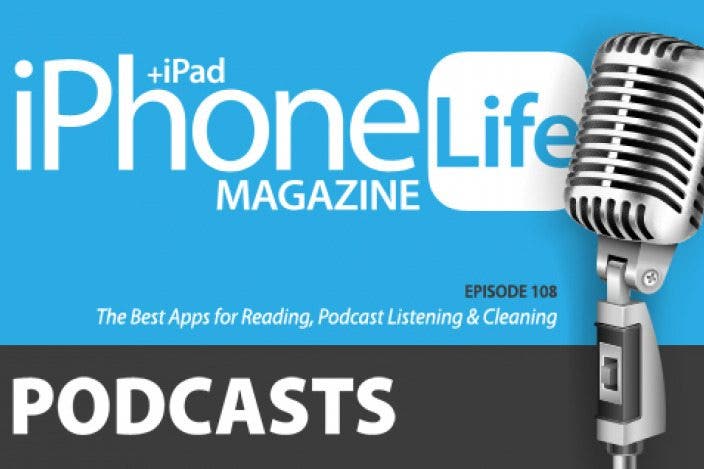

 Amy Spitzfaden Both
Amy Spitzfaden Both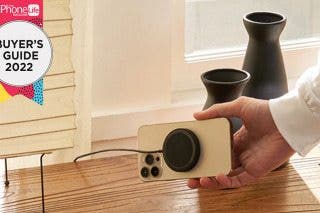
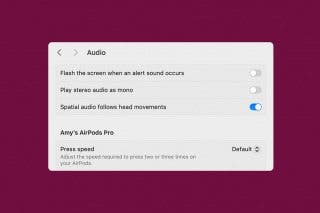
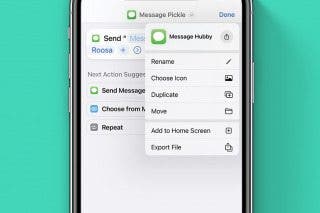
 Olena Kagui
Olena Kagui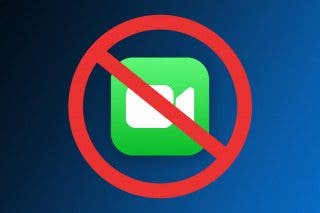
 Rachel Needell
Rachel Needell
 Rhett Intriago
Rhett Intriago